 | |||
 | |||
| Auto Thrill Show Thirty "Hell Drivers" risk life, limb and vehicles, crashing cars and performing other stunts in a daring high-speed show. Among the features of the program are: four-car bumper tag, wing ski jumps (drivers careen off a low ramp on two wheels at 50 miles an hour), a crash rollover contest, and the "dive bomber crash" (off the ramp with an old car onto the top of a parked car). In the show's climax, a driver pilots a truck on a dangerous ramp-to-ramp "flight," hurtling more than 70 feet through the air. The 5,600-seat Auto Thrill Stadium has a banked figure-8 track, the first such track to be created exclusively for stunt driving. | 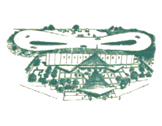 |
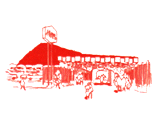 | Avis Antique Car Ride Open-topped antique cars, reproduced to five-eighths scale, provide a pleasant ride through an old-fashioned country setting. Each car seats up to five, and anyone 10 years or over can drive. A single pedal-accelerator and brake combined-controls the one-cylinder engine that pushes the cars along at a top speed of four miles an hour; the ride takes four minutes. Avis also operates a rental service for automobiles and power boats at the Marina landing. |
| Century Grill This restaurant serves hamburgers prepared with savory sauces, along with side dishes from every nation represented at the Fair (Japanese teriyaki sauce, German sauerkraut. etc.)-as well as frankfurters. Beer and soft drinks are also available in the dining room and at an oval bar. | 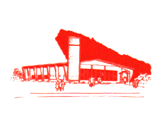 |
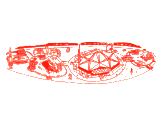 | Chrysler A 100-foot engine with a 50-foot dragon for a crankshaft, a ride on a production line and a zoo of metallic monsters are part of this imaginative exhibit, one of the largest at the Fair, assembled on five islands linked by bridges and set in a six-acre artificial lake. Four of the islands demonstrate specific aspects of Chrysler's work: engineering, production, styling and operations. The fifth is a large theater in which puppets present a continuous show. Other features are a Giant rocket poised on the lake, symbolizing the company's space and missile work, and more than a thousand umbrella-shaded chairs for visitors, which are set around the perimeters of the islands. |
| Eastern Air Lines The building is primarily a terminal for the shuttle-bus service which Eastern operates on an hourly schedule for its passengers to and from LaGuardia and Kennedy airports. The pavilion has a ticket counter, lounge and baggagechecking facilities. | 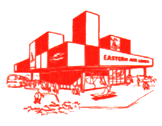 |
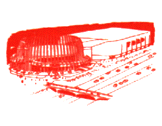 | Ford The Ford Rotunda, several city blocks long, contains a variety of exhibits, a number of which were designed by Walt Disney: fragile scale models of historic settings; huge figures of animated dinosaurs; displays of the latest wonders of science; and a paradise for automobile enthusiasts, featuring Ford-built cars of all kinds-antique, new, experimental, foreign-made. The building itself is one of the chief sights: a glass rotunda with 64 towering pylons at one end and a large exhibition hall at the other. Enough steel went into its construction to erect a skyscraper 125 feet square and 22 stories high. The emphasis everywhere is on cars. Part of the tour of the rotunda is made in automatically operated Ford-built convertibles riding on a special roadway. |
| General Motors A detailed, knowledgeable look at the technological developments awaiting mankind is provided by this exhibitor, who performed the same service at the New York World's Fair of 1939. The predictions are all solidly based on fact; they picture, among other things, a visit to the moon, a year-round commercial harbor in the Antarctic, a vacation resort located underwater and some surprising aspects of the city of the future. The GM pavilion, one of the most eyecatching at the Fair, is keynoted by an enormous slanting canopy 110 feet high, balanced, by some architectural legerdemain, over the entrance to the exhibit area. In addition to the Futurama, displays show the range of research conducted by GM as well as the variety of products made by the company (automobiles through home appliances). There are three experimental cars and five dream kitchens. |  |
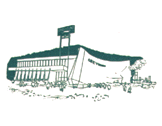 | Greyhound A transcontinental bus ride on film and regional American meals are the main attractions of this pavilion. It is also home base for the Fair's transportation fleet of over 300 Greyhound vehicles. |
| Hall of Science In one big pavilion, 11 companies and organizations present displays devoted to recent and imminent advances in scientific knowledge-including the simulated meeting in orbit of two space vehicles. The building itself, a permanent structure, will become the New York Museum of Science and Technology. |  |
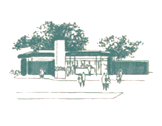 | Hertz The Hertz Travel Center, at the base of the Heliport, is staffed by multilingual attendants who offer travel information, maps of the New York City area, and direct telephone communication to the airlines represented at the Fair. The center can also arrange auto reservations around the world. |
| Lowenbrau Gardens The brewers of Lowenbrau, a Bavarian beer, have reconstructed an open-air Bavarian-style restaurant set in a village square. The square is surrounded by five buildings, including a bell tower and gate. Three of the buildings are service areas for the restaurant. Every now and again Lowenbrau's brewery wagon, drawn by four massive horses, can be seen in the street outside, or traveling about the fairgrounds. | 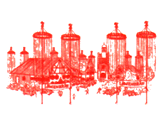 |
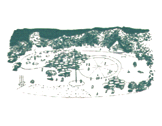 | National Maritime Union Park The National Maritime Union, AFL-CIO, sponsors a small park as a quiet place away from the noise and bustle of the Fair. The park, on an elliptical plot, has a waterway with a pool at either end; model ships float in one, a fountain is in the other. The park is dotted with benches, and concerts and ceremonies are held on various occasions. |
| Port Authority Heliport Rising 120 feet on four mammoth tapered columns, the Port of New York Authority building is the aerial gateway to the Fair. It includes a heliport, restaurant and bar open the year round. Set below the heliport, a separate structure has a film and exhibits that tell the story of transportation in the New York-New Jersey Port District. Helicopters make sightseeing flights. | 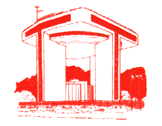 |
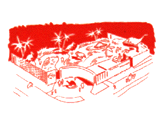 | Sinclair Life as it existed 165 million years ago is authentically and vividly re-created in "Dinoland," a large paleontological display bounded by a decorative wall and a partly concealed L-shaped exhibit building. Life-sized dinosaur replicas were created by the distinguished animal sculptor, Louis Paul Jonas. |
| SKF Motion engineering is the theme expressed under the SKF parasol, a circular roof which soars to an 82-foot needle at its apex. SKF Industries, Inc., the American affiliate of a worldwide complex of ball and roller bearing manufacturers, uses an illustrated lecture and an exhibit of finished products to show how it helps keep the machines of civilization running. | 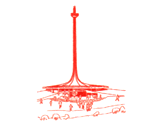 |
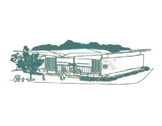 | Socony Mobil This exhibit, located in a low, red-roofed pavilion, is devoted to a game. On a large map of the United States is marked the route of the most recent Mobil Economy Run--a grueling cross-country test in which experts try to get the most efficient gasoline consumption out of new cars. Contestants seated at automobile controls "drive" this route, attempting to hold down fuel consumption. |
| Space Park The dramatic vehicles that are carrying the United States into the space age are displayed by the National Aeronautics and Space Administration and the Department of Defense in the area surrounding the Hall of Science. On display are a Project Mercury spacecraft which has orbited the earth, a Gemini two-man spacecraft, a model of the Apollo which will carry three astronauts into lunar orbit, a lunar excursion vehicle in which men will land on the moon, the lower portion of the Saturn V moon rocket, and a full-scale X-15 rocket-powered research airplane. Thor-Delta, Atlas and Titan II rockets stand in launch positions, with the Tiros satellite and Mercury and Gemini capsules as their payloads. Aeronautical engineering students are on hand to act as expert guides. | 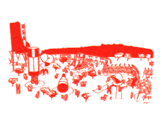 |
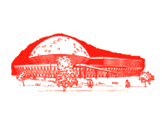 | Transportation and Travel This big, two-story pavilion contains a seemingly endless variety of displays. The exhibitors include airlines and steamship lines, railroads and trucking companies, travel agencies and tourist resorts, and the United States Army, Navy and Air Force. Their exhibits include a Hall of Fame for pioneers of the transportation industry and a live drama, "Sea Hunt." Other displays show custom-made automobiles, transportation equipment and startlingly realistic films of flight, communications systems, maps and models of all kinds and a collection of gold art works from the ancient Indian cultures of South America. The pavilion has at one end an enormous 96-foot-high Moon Dome whose plastic covering forms an accurate relief map of the moon; a science film is shown inside it. There are also hobby and souvenir shops, a cafeteria-style restaurant and a snack bar. |
| Underground World Home Something really different in housing is displayed here: a three-bedroom house, completely below ground level. It is presented as the forerunner of dwellings that the builder says have marked advantages for today's living. Guides explain why underground homes can provide more control over air, climate and noise than conventional houses-as well as protection from such hazards as fire and radiation fallout. The house occupies most of the area inside a concrete shell, the top of which is two and a half feet underground; a wide staircase brings visitors down to the front door. Windows in the house face scenic murals placed on the walls of the shell. | 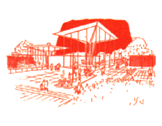 |
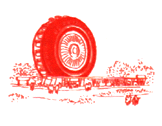 | U.S. Rubber Visitors riding along the rim of a giant whitewall tire soar 80 feet into the air for a spectacular view of the fairgrounds. Twenty-four barrel-shaped gondolas that carry four people each move around the circumference of the wheel. The tire, which is floodlighted at night, stands in a landscaped area; at the entrance to the ride are interesting displays of the company's products. |